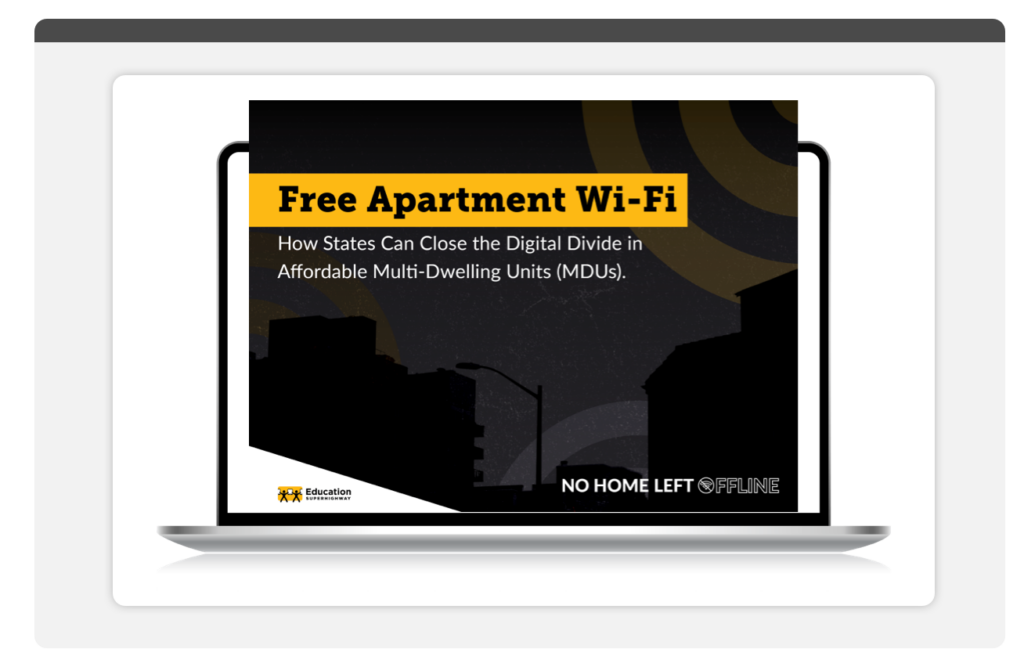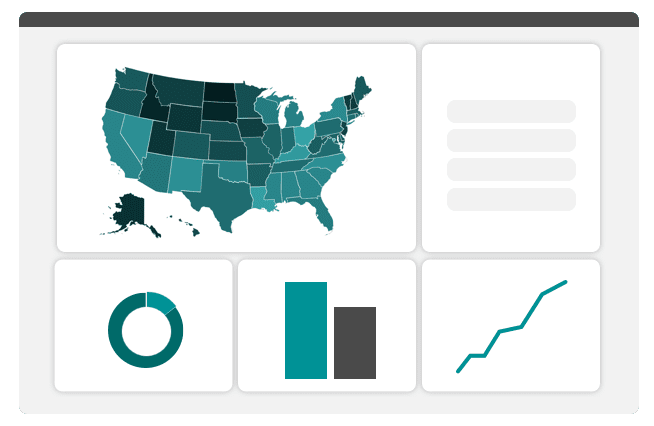In today’s interconnected world, access to reliable broadband internet is no longer a luxury but a necessity for participation in education, employment, healthcare, and more. Recognizing the critical importance of equitable broadband access, the Broadband Equity Access & Deployment (BEAD) program aims to expand connectivity, particularly in multi-family residential buildings. As advocates for Apartment Wi-Fi and MDU-focused connectivity solutions, EducationSuperHighway has developed recommendations for states seeking to leverage BEAD funding effectively.
Unit-Level Connectivity
The cornerstone of any broadband expansion effort in multi-dwelling units is ensuring that every household within a building can access reliable internet service. BEAD subgrants should prioritize solutions that reach individual residential units and common areas, offering options such as wireline fiber connections, non-fiber technologies, or building-wide Wi-Fi installations.
| “For projects that propose to serve a multiple-dwelling unit (MDU), an applicant will specify if the project will provide: (a) a wireline fiber connection to each unit; (b) connection with a non-fiber technology to each unit; or (c) a building-wide Wi-Fi installation available to all units.” |
Free & Discounted Service
Affordability remains a significant barrier to broadband adoption, particularly for low-income households. States should encourage BEAD applicants to offer free or discounted broadband service tiers, with a preference for speeds of 100/20Mbps. By including operational expenses 1 for these services in matching funds, states can ensure that cost is not a barrier to access to vulnerable households that may struggle to maintain internet subscriptions.
| “Affordability: Up to 84 points (21% of total points) Applicants that include a commitment to offer symmetrical 1 GBPS service for a monthly reference price of not more than $100, with no installation, equipment rental fees or other charges to the end user, shall receive a baseline score of 20. Applicants with a proposed 1 GBPS cost above or equal to $100/month will receive no points. Applicants with a proposed cost below $100/month will receive points equal to the percent of their proposed monthly cost relative to the $100, subtracted from 1, multiplied by 64, rounded up to the nearest whole integer. For example, suppose an Applicant commits to $30/month for a 1 GBPS package. $30/month is 30% of $100/month. 30% (0.30) minus 1 is 70% (0.70). Seventy percent of 64 is 45 (rounded up), and therefore that Applicant will receive 45 points.” |
Eligible Use of BEAD Funds
It is crucial that state subgranting processes clarify that funds can be used for the equipment and labor necessary to deliver internet service to households 6pwithin their units and common areas. This clarification enhances the likelihood that proposals will include comprehensive solutions tailored to individual units.
Partnerships
Collaboration between eligible subgrantees will also be key to the successful BEAD-funded broadband deployment. States should encourage BEAD applicants, especially traditional Internet Service Providers (ISPs), to explore partnerships with managed service providers (MSPs) to reach individual residential units effectively. By leveraging the expertise of specialized providers, such as MSPs, states can ensure comprehensive coverage and competition in the marketplace.
Property Owner Outreach
Engaging property owners early in procurement is essential for successful broadband deployments in multi-dwelling units. BEAD applicants should be required to obtain letters of agreement from property owners demonstrating collaboration and ensuring that deployments will provide service to all units and prioritize affordability.
Bandwidth Capacity
Proposals should explain how bandwidth capacity was calculated, ensuring it can support all residents with minimum speeds. This requirement lays the foundation for scalable and sustainable broadband infrastructure that meets residents’ needs now and in the future.
Resident Experience
The onboarding process for residents should be as seamless as possible, with providers offering customer premises equipment (CPE) at no cost. By prioritizing ease of use and accessibility, states can improve adoption rates and ensure that all residents can take advantage of broadband services.
Action Plan for States
In conclusion, EducationSuperHighway’s BEAD subgrant recommendations provide a comprehensive framework for states to enhance broadband access in multi-tenant housing. By prioritizing affordability, reliability, collaboration, and the resident experience, states can leverage BEAD funding to bridge the digital divide and achieve the universal service goals of the BEAD Program.
Contact us for clarity on our recommendations or assistance with subgranting process design.
- Broadband, Equity, Access, and Deployment (BEAD) Program Frequently Asked Questions and Answers Draft Version 2.0, 1.16 ↩︎






